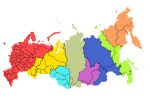 On Wednesday (11/10/2010), Blackrock introduced iShares MSCI Russia Capped Index Fund (ERUS). It becomes the third Russia single-country ETF available to U.S. investors while offering no improvements over the two existing funds.
On Wednesday (11/10/2010), Blackrock introduced iShares MSCI Russia Capped Index Fund (ERUS). It becomes the third Russia single-country ETF available to U.S. investors while offering no improvements over the two existing funds.
The fund seeks to track the MSCI Russia 25/50 Index, which is a free-float adjusted market capitalization weighted index of equity securities listed on stock exchanges in Russia. The MSCI 25/50 index name (pdf) refers to the constraints of registered investment companies (RICs) to not have more than a 25% weighting in a single stock and for the combined weights of all stocks with a greater than 5% weighting to not exceed 50% of the fund.
Sector weightings as of September 30 are Energy 51.6%, Materials 18.0%, Financials 14.1%, Utilities 8.0%, Consumer Staples 4.4%, and Telecommunications 4.0%. The four sectors with zero allocation are Consumer Discretionary, Health Care, Industrials, and Technology.
Index constituents currently total 28, the largest being Gazprom 21.3%, Lukoil 11.8%, Sberbank 10.7%, Novatek 4.6%, Rosneft Oil Company 4.3%, and MMC Norilsk Nickel 4.3%. The fund has an expense ratio of 0.65%, and additional information is located in the press release, overview page, and the fact sheet (pdf).
ERUS will face competition from two existing Russia ETFs. The first is the SPDR S&P Russia ETF (RBL) launched earlier this year. RBL has reduced energy exposure at just 41% of the fund and an increased Telecommunications weighting at 18%. It has six additional stocks (for a total of 34), and its expense ratio of 0.59% is lower than ERUS.
The second, and most formidable competitor, will be the Market Vectors Russia ETF (RSX). Van Eck Global, the firm behind RSX, launched the fund in April 2007, and it has become the de facto Russia ETF for U.S. investors. It provides a more diversified approach by holding 43 stocks with none currently above a 9% allocation. RSX also sports a lower expense ratio than ERUS of 0.62% and good liquidity with average daily volume of more than 2.3 million shares and $78 million. Given these facts, RSX continues to be my ETF of choice when I desire exposure to Russia.